Here’s a debate that never gets old among surface designers, be they experts or newbies: should I create stand alone designs or full-blown collections?
Whether you lean towards a single, detailed pattern or illustration or enjoy working in collections depends on a few factors, like the industry you choose to pitch your art to. Do you mostly make art for the puzzle industry? Or wallpaper, perhaps? Then you’re probably more inclined toward single illustrations or patterns. If you usually target the home decor market or the fabric industry, you’ll see yourself creating collections of three or more patterns or a mix of patterns and illustrations.
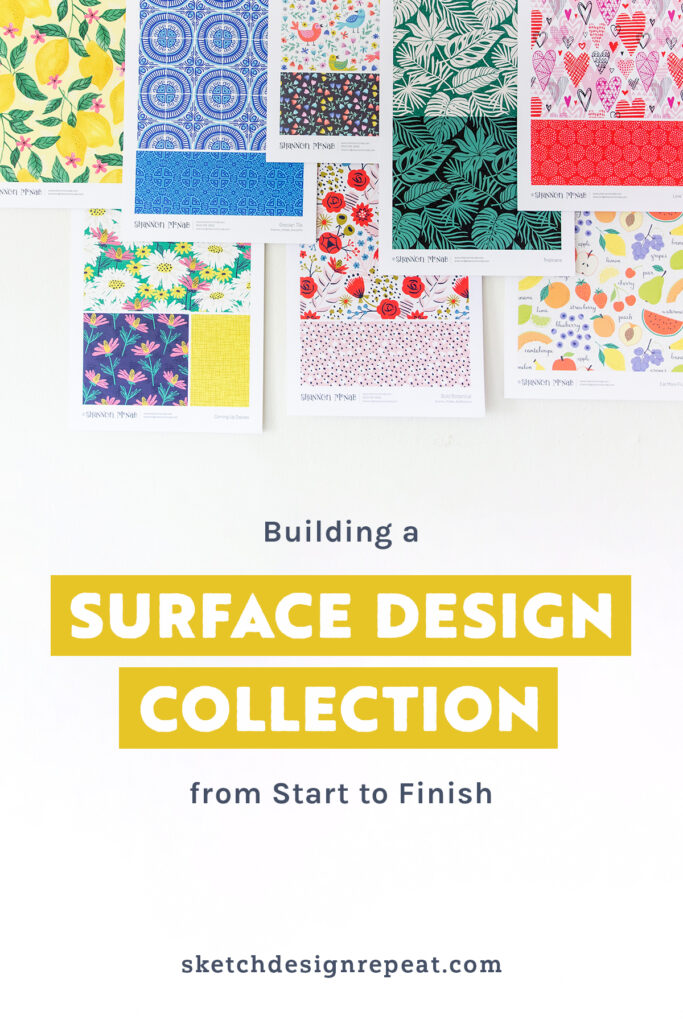
Which side of the debate wins is personal and often boils down to what comes to you naturally or what you enjoy doing the most. You might find yourself working in collections more often than not because you love bringing together patterns and illustrations that fit in like the pieces of a puzzle.
While nothing is written in stone, from my personal experience, I’ve realized that most companies prefer at least a few simple patterns to accompany complex ones. A collection adds more value to your designs and caters to prospective customers who need simpler designs.
What is a surface design collection?
It’s a group of patterns, illustrations, or both, built around a single theme. Usually, a collection can have anywhere between three to 12 designs but there is no hard and fast rule. It can be made up of patterns only (a bolt fabric collection, for example), illustrations only (like a greeting card collection), or a combination of both.
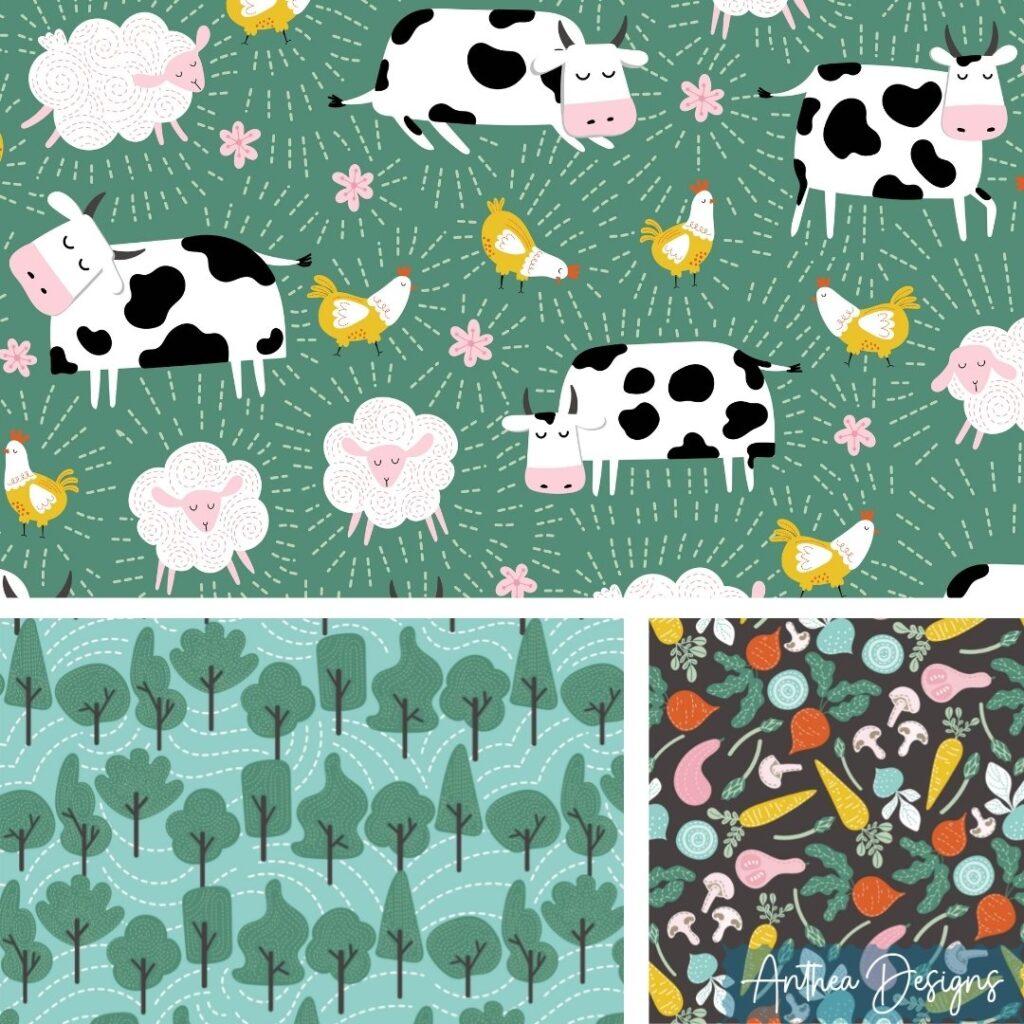
Why should you design in collections?
We often focus too much on the hero pattern or the main illustration. While pitching a single design to companies isn’t uncommon, adding a couple of coordinating patterns can increase your chances of getting a licensing deal. A few coordinates to support the hero design are easy to create and add value to your portfolio.
How large should your collection be?
Many seasoned designers would say that a full collection needs to have anywhere between ten to 12 designs. Anything less than that is called a mini-collection. But from my experience, I’ve realized this number depends heavily on your target market. Some fabric companies (especially those that deal with quilting lines) might ask you for a collection with about 12 designs, but clothing companies would probably be happy with just a hero pattern.
So, does that mean that if you want to get your art licensed to the fabric industry, your collections should always have more than ten designs? Or does it mean that you can’t pitch to the bolt fabric industry if your collections have less than the ‘desired’ number?
Neither!
I’ve had a fabric company pick up one of my collections that had only three designs. They needed one more coordinate to round out the collection and asked me to make one.
A lot of times, the number of designs in a collection can also depend on how you are comfortable working. Some surface pattern designers are often brimming with ideas to create a large pattern collection and they can spend days building a cohesive collection, with multiple hero, secondary, and filler designs.
But there are also designers (myself included) who prefer working on smaller collections. I’ve noticed that I work best with a collection with three or four patterns, or one with a single illustration and a couple of patterns.
Either way, it’s up to you to decide how big your collections are — there’s no one “right” answer.
How do you build a surface pattern design collection from scratch?
1. Pick a theme
Since we’re talking about a pattern collection, it helps to choose a theme so that all the designs in that collection look cohesive. Based on how you work, you might choose a trending theme or decide to go evergreen. Evergreen themes are those that are always popular and never go out of style — think florals or Christmas. Everyday themes, sometimes known as conversational or novelty themes, also work well as a basis for a strong and unique pattern collection.
I always say I’m a prompt-hoarder. I often sign up for design challenges that come with prompts, and I revisit the prompts every time I’m looking for inspiration.
Related Article: 10 Ways to Find Surface Design Inspiration
2. Brainstorm
Once you’ve picked your theme, do a quick brain dump. A brain dump is an easy but effective planning technique where you jot down all your ideas in one place. This method helps declutter your mind and ensures you don’t forget any of your brilliant ideas.
Make a list of words related to the theme, jot down how many patterns you want to have, what layouts you want for each pattern, and the scale of each design. I sometimes even make thumbnail sketches for each pattern. You can be as loose or detailed as you like, but the key here is to not overthink it and be flexible.
This stage is for ideas, and remember that ideas are allowed to evolve.
3. Find inspiration
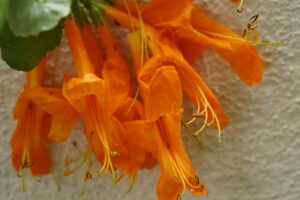
Inspiration often varies based on the theme you choose for your collection. When I work on a floral collection, for example, I go out for a walk around my neighborhood, take photographs of flowers and leaves that I find interesting, or often just pick some flowers from my own garden. However, for most other themes, I tend to go through magazines, books, and my favorite source ever: Pinterest.
Sketch Design Repeat has several Pinterest boards filled with inspiration for some of the most popular design themes, so you don’t have to start from zero.
4. Make a moodboard
This is a step I often overlook, but I have noticed that when I do take the time out to make a moodboard, the result is much better than when I don’t. I always start with a Pinterest board where I save images that correspond to the theme I’m working on and make a conscious effort to not just include patterns, but photographs as well.
Another way to make a moodboard is to cut out images from books and magazines, take photographs, and have them all in front of you in one place.
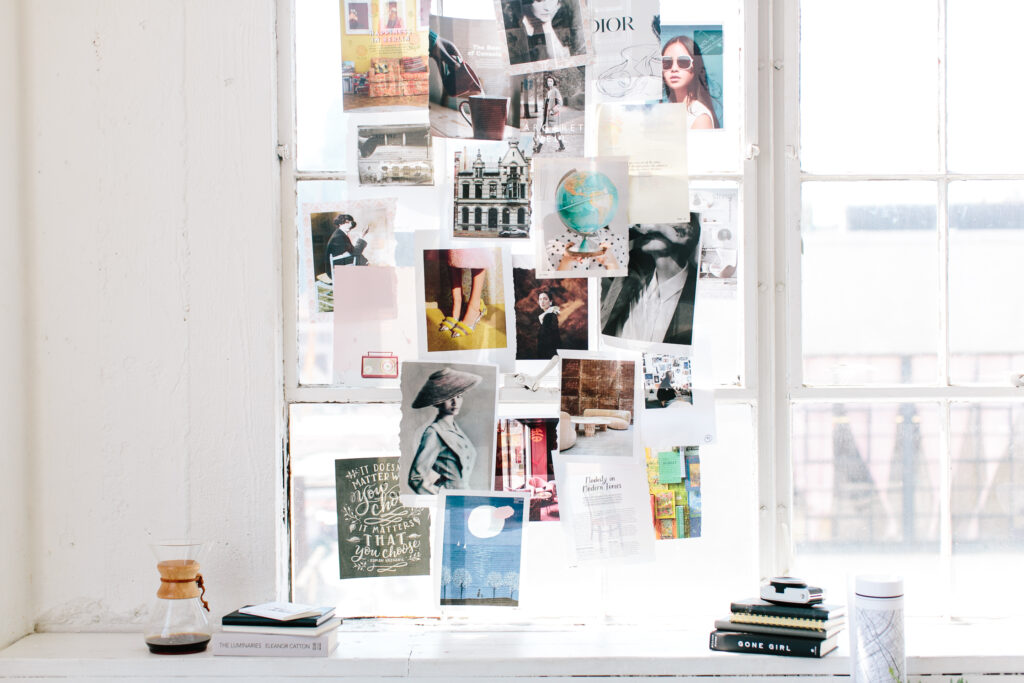
5. Sketch motifs
For my first ever collection, I remember drawing about 20–25 motifs. But I quickly ran out of motifs and was left wishing I had more to play around with. It was only when my designs started lacking variation that I realized I needed to double my sketches. So, for all my subsequent collections, I draw at least 50 motifs (a lot of them are variations of the same element) just so that I have enough variety in a single pattern.
And while the hero pattern always gets preference, put some thought into coordinates. Draw some filler and geometric motifs that you can use to make up at least one coordinate pattern in the collection. Shannon has a simple class that teaches you how to create strong coordinate patterns on Skillshare.
6. Prep motifs before building the collection
Once you’ve sketched out your motifs, it’s time to ink or paint them and then scan them, or redraw them digitally. This step can look different based on your workflow.
For most of my patterns, I draw the motifs in pencil, then redraw them using a black pen. I sometimes use tracing paper to redraw the motifs, and sometimes do this digitally. If you draw all the elements in ink, you’ll have to scan them and bring them into either Photoshop or Illustrator. You don’t necessarily need a high-end scanner; even your smartphone, with natural lighting and a good photo-editing app, can work wonders.
7. Build your patterns
Once you’ve scanned, cleaned up, and separated your motifs, it’s finally time to start making your patterns. This is my favorite part of building a surface design collection. Start with a working color palette and test out your pattern layouts, scale, and cohesiveness.
Keep what’s working and tweak wherever needed. You can keep your designs in their working palette or recolor to a different color scheme.
For reference, most hero designs are complex, use a lot of elements, and are larger in scale. A complex coordinate is simpler than the hero pattern in terms of both layout and color, yet has enough variety and movement. And a simple coordinate uses a limited number of colors and motifs and is usually the smallest in scale.
If you want to learn more surface design terminology, this article discusses the 10 most common terms, including heroes and coordinates in more depth.

8. Add to your portfolio
Once your collection is ready, it’s time to export your images. I like to export them as high-resolution JPG images and then add them to my portfolio sheets, like you see above.
Portfolio sheets, or sell sheets, as they’re often called, are a great way to see if all the designs in your collection work as a cohesive unit. Once you’re convinced all patterns and illustrations in your collection go well together in terms of themes, design elements, and color, you’re all set to start pitching!
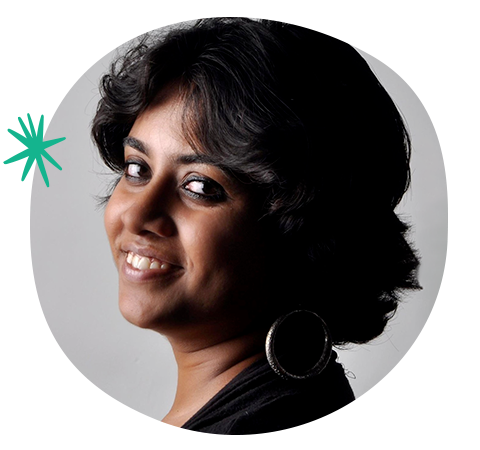
Written by Priyadarshini Das Sharma
Website: www.thehappypost.com
Instagram: @antheadesignstudio
Priyadarshini is the founder of Anthea Designs. A teacher by day and a surface designer by night, she has a passion for sharing her knowledge about everything art. When she’s not working on her next masterpiece, Priyadarshini loves spending time with her daughters and four rescue dogs.
Thanks for sharing this great article – even if you know any of this info, it’s helpful as a refresher and reminds you of the process you need to go through to create a succesful collection. I appreciate the links as well! I’m now off to see your work on IG!
Thank you for reading, Geraldine!
Dear Pryia, I already read and viewed quite some material about designing in collections (including Shannon’s Skillshare course :)) but I did gain additional insights and inspiration from your article, such as creating a collection of illustrations for greeting cards (as opposed to the hero / secondary / blender approach). Thank you for a fresh perspective 🙂
I’m glad you could look at approaching collections from a different angle. Thanks for reading, Reine!
Thank you for this great article! How long does it usually take you to create a collection?
I can’t speak for Priya, but for me, it really depends on how large the collection is and how inspired I was by the theme. In most cases, I can usually finish a small collection (3 patterns) within a day or two.
Dear Priya,
Thank you for inspiring me to start surface design. I’m excited to start my new adventure. But still need to have someone to guide me in the right direction. I will keep reading and learning through your inspiration in surface pattern designing.